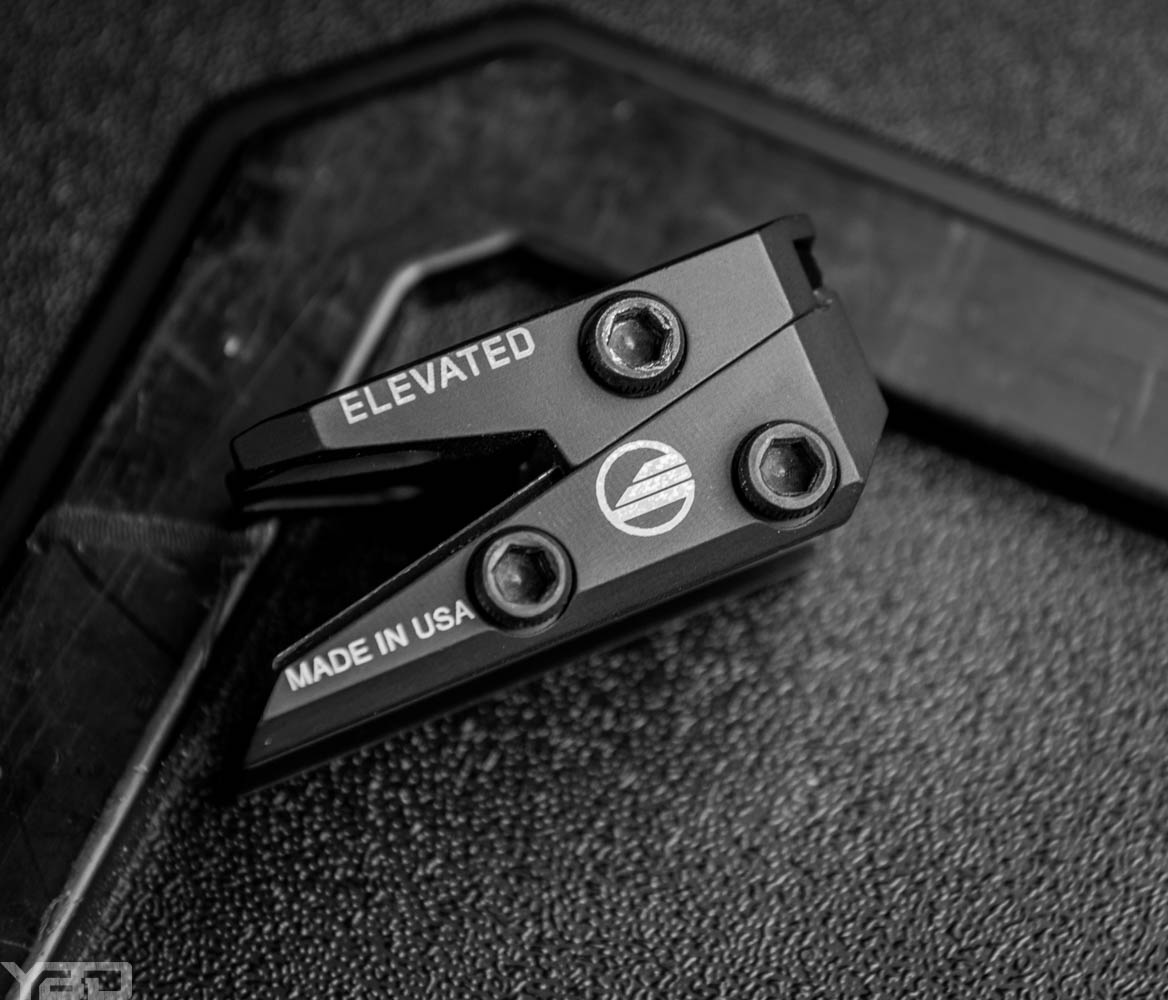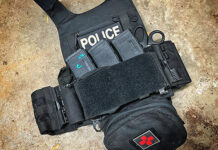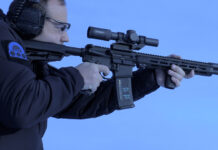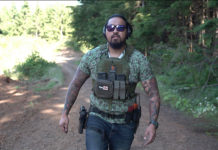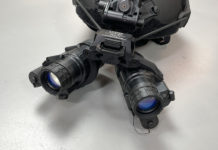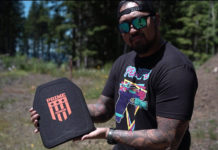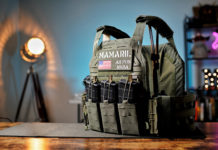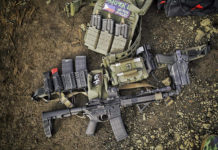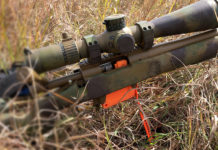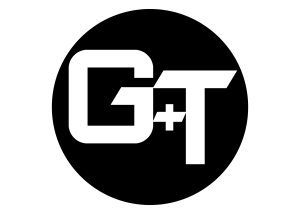Red dot optics. There sure are a lot of them out there. Some good. Some crap. Some in between. But the proof is in the pudding and the cream always seems to rise to the top (feel free to use any other cheesy catch phases your grandparents would use). In terms of quality and ruggedness, Trijicon and Aimpoint typically find themselves at the top of the preverbal red dot Totem Pole. More often than not you can find their optics on this author’s firearms when he can afford it. The Aimpoint T1/T2 series of red dots pretty much set the standard for ruggedness and longevity but the Trijicon MRO and RMR have also proved themselves reliable and robust over the years.
The beautiful thing about modern technology when related to single magnification, red dot optics is you can get amazing quality, with long lasting battery life in a small package. This is especially true with the above mentioned RMR. Because of the small size and ruggedness of modern red dot optics they can be found mounted to just about any firearm you can imagine. For example, you can find them on pistols, sub guns, rifles, shotguns, machine guns and even non-firearm related items such as crossbows, telescopes and more. The possibilities are numerous to say the least.
With all the different optic host options comes the issue of mounting solutions. Which mount to get for your particular application can end up as an expensive adventure in what works and what doesn’t. For this conversation, let’s leave pistols out of the equation. Semi auto (and full-semi-auto, sure why not) pistols typically have their slides milled out for a particular micro red dot (MRD) and may have adaptor plates that can be used to facilitate more than one manufacture of said MRD. Some folks will use pistol iron sights with their red dots, others won’t. Not going to open up that argument of which is better, just stating the facts. If the sights need to be aligned (co-witness) with the optic, the sights need to be replaced or adjusted to work with the optic. In this instance, the slide, iron sights and optic all reciprocate during the firing cycle. There are some exceptions where the slide is not milled out and other mounting solutions are used. The ALG 6-second mount comes to mind, which places the red dot above the slide, meaning the optic will not reciprocate with the slide during the course of fire.
Let’s focus on long guns and sub-guns for the moment. For America’s favorite AR-type black rifles a shooter may purchase a mount for their red dot that is an absolute co-witness or lower 1/3 co-witness or something in between. Depending on the mount, this means the front and rear iron sights (if used) will align either in the center of the optic (absolute) or in the lower 1/3rdquadrant (lower 1/3rd). There are pros and cons to each which is a topic for another day, but those are the primary two options. Of course the back-up iron sights (BUIS) will need to be the appropriate height to allow the absolute or 1/3rd co-witness combination to work. This means you have to buy a specific optic to put on a mount with specific set height and iron sights (if used) at a specific height. Put the combo together, slap it on your gun, zero that puppy and you are good to go.
Well, what if you don’t want to play the guessing game or maybe you want to go from a traditional gas impingement AR type rifle to a piston driven AR with a higher top rail like POF or the HK 416/417? Or perhaps you want to use another type of rifle such as the SCAR, ACR, XCR, Tavor etc? All of these rifles have higher top rails, different bore offsets and require shorter mounts to allow proper co-witnessing with optics and sights, which by the way would also be shorter than the traditional AR. Then there are the real low riders such as sub guns, shotguns and other rifles like AKs. Getting optics super low on those types of firearms can be very challenging (if not impossible) and sometimes results in the shooter ignoring the fact they can’t co-witness and just running the sights as is. Not sure about your parts bin, but we have multiple mounts with multiple heights available for use as we change out mounts and optics on a regular basis with all the different firearms we test.
What if you could swap optics to all the different firearms platforms mentioned above and not have to change the mount in the process? That would be ideal right? Well, ideal would really be an unlimited budget for optics and mounts with the ability to buy whatever combination we wanted. If wishes were fishes…
We digress. A single mount that would accommodate low, mid and high mounting solutions for popular red dots would be very helpful. Well in this case, wishes do come true.

At SHOT Show 2018 we had the pleasure of running into a new mounting solution company called ELEVATED.
Their motto is, “Elevate Your Shooting Experience”. Simple and to the point. They saw the need for a solution to the fore-mentioned optic/BUIS conundrum. Currently they offer a single product called the SLIDE. The SLIDE is an optic mount that solves the problem with optic height, co-witnessing with BUIS alignment across rifle, shotgun and sub-gun firearms. Their solution was pretty ingenious and simple. Create a two-piece mount that slides at an angle, changing the elevation of the top of the mount either higher or lower. Elevate. Get it? SLIDE. Make sense? See, simple.
The SLIDE is currently available to accept two optics, the Trijicon MRO and the Aimpoint T1/T2. It is our understanding there is a RMR version on the horizon. Secure the optic to the SLIDE with the appropriate hardware then mount the SLIDE to any in spec 1913 Picatinny top rail which can be found on most modern sporting firearms these days. Tension to the 1913 rail is adjusted with two cross bolts that are turned with an Allen wrench. The lower portion of the mount stays fixed to the 1913 rail while the top half of the mount slides back and forth up or down the sloped lower ramp of the SLIDE. This allows any mounting height solutions to be used with any BUIS option. Pretty slick. When the desired elevation is reached, it can be locked in with a single cross bolt that tightens the mount down. Want to swap guns? Remove the lower two cross bolts, remount the SLIDE and optic to the next firearm, adjust the elevation then go zero in the optic. Simple. No need to remove the optic from the mount.
We received a SLIDE mount that was set up for the Trijicon MRO. The mount is relatively small.

Only an inch wide and at a little over two inches in length it doesn’t take up much room on the top rail. It appears rugged and is made of 7075 aluminum billet that is type III hard coat anodized. Everything on this mount is intuitive and nothing is complicated. Mounting the optic to the mount was simple and fixing the set up to the rifle was uneventful. Tolerances seemed good and the machining is nice. “Made in the USA” and the company name and logo are laser engraved into the side of the mount for an added touch. We had fun moving the optic from rifle to shotgun and everything in between. It works. Plain and simple.
At the time of this writing we have not fired the SLIDE on larger caliber firearms. That is coming. The goal would be to see if the elevation slips. As everything is held in place with tension/friction we do have some concern with elevation shift after impact or heavy felt recoil. Smaller calibers not so much, but a full auto application could prove interesting. We will see if we can work something up in a follow up article. One way to potentially mitigate any potential unwanted sliding would be to machine micro “teeth” into both faces of the upper and lower mount that would lock together when tightened down. Maybe in future versions. Oh, if implemented, feel free to contact us and we will let you know where to send the royalty check. Just kidding… not really. We would also like to see a quick detach option in the future. It should also be noted that even the SLIDE won’t solve all co-witnessing issues as ultra-low height over bore sights such as bead sights on a shot gun are just too low to even stick up past the optic housing let alone an optic on a mount.
So we aren’t saying the SLIDE will work for everything, rather we are saying it works for the majority. Don’t be pissed at us if you buy one and it doesn’t work with your particular firearm. Direct your questions to the ELEVATED crew and they should be able to answer your questions regarding co-witness fitment on your firearm.
Overall we were pleasantly surprised at the creativity that went into the SLIDE and the simple nature of the design is well thought out.

The applications and mounting options are extensive and the more optics the ELEVATED SLIDE can accommodate in the future will provide countless opportunities for mounting your favorite optic to your favorite firearm. We can see this concept easily being adapted to other non-red-dot optics out there. Variable magnification? Sure, why not? Will they? Who knows, but it wouldn’t surprise us. Price point is around the $150 mark. While a little bit more that a fixed height mount, it comes in less than two different height fixed mounts, which is where the value pays for itself. If you plan to swap optics on your guns or are having a heck of a time co-witnessing, give the folks at ELEVATED a try.
There is a good chance their SLIDE will work for your intended application.
To purchase your ELEVATED Technologies SLIDE click here.


